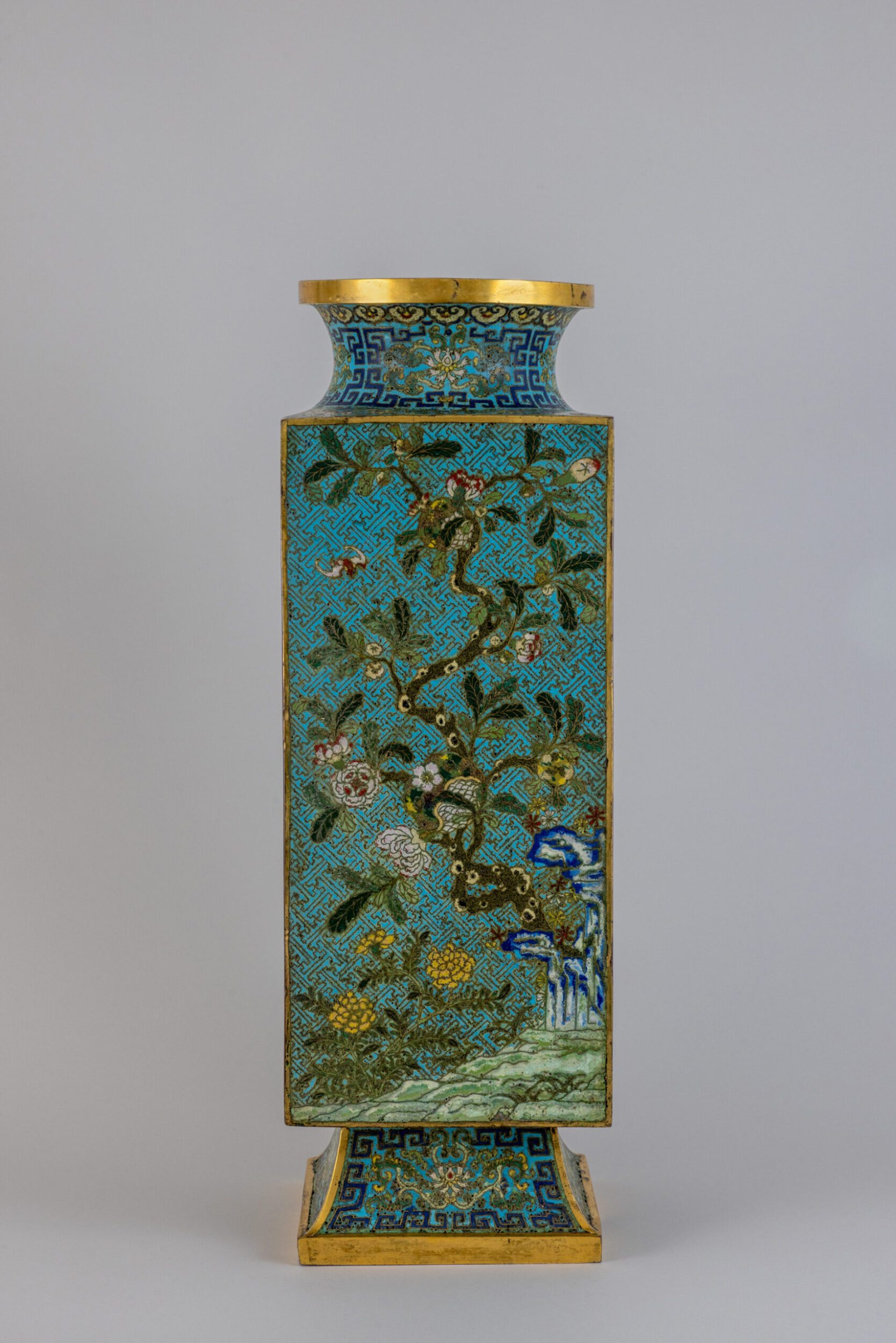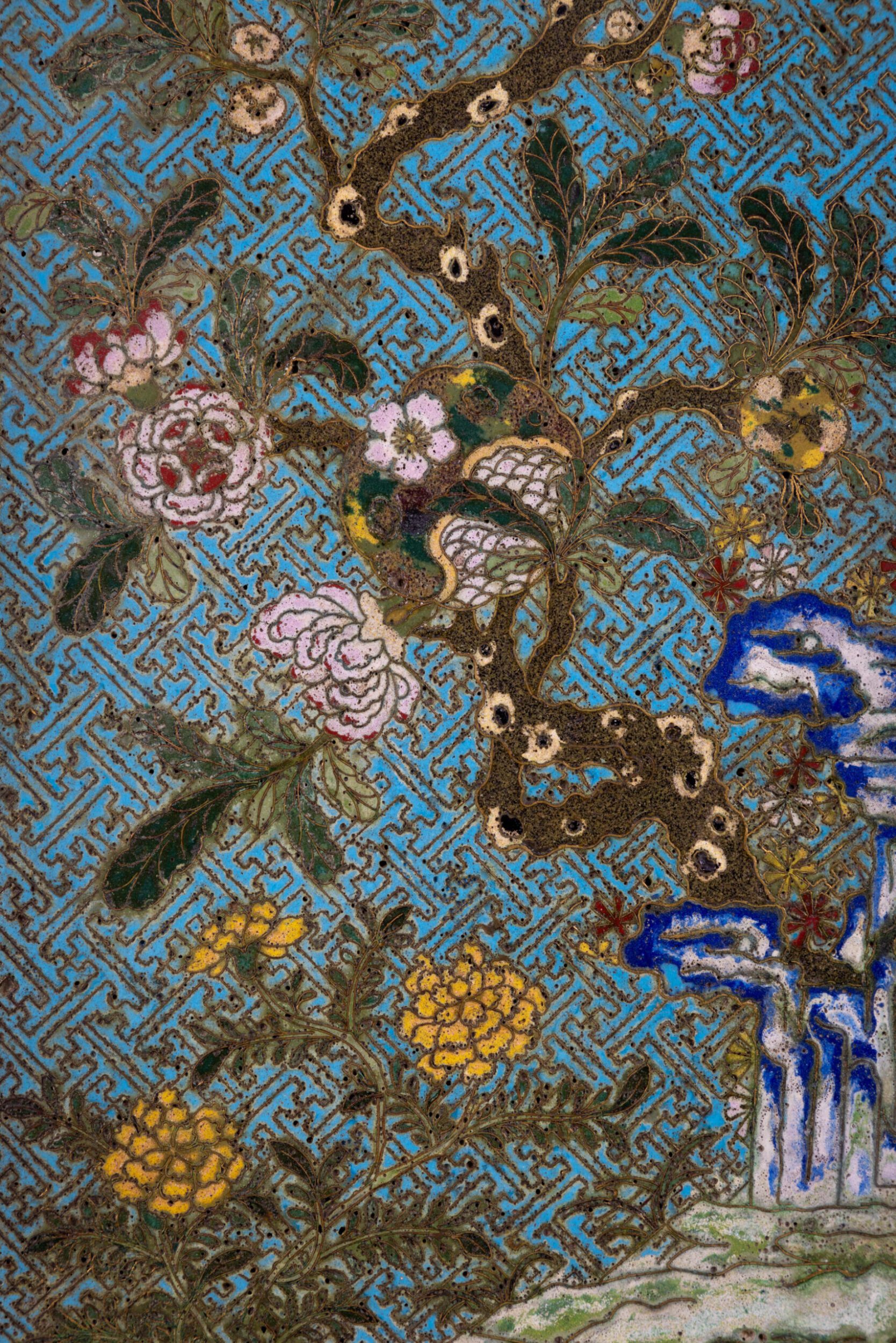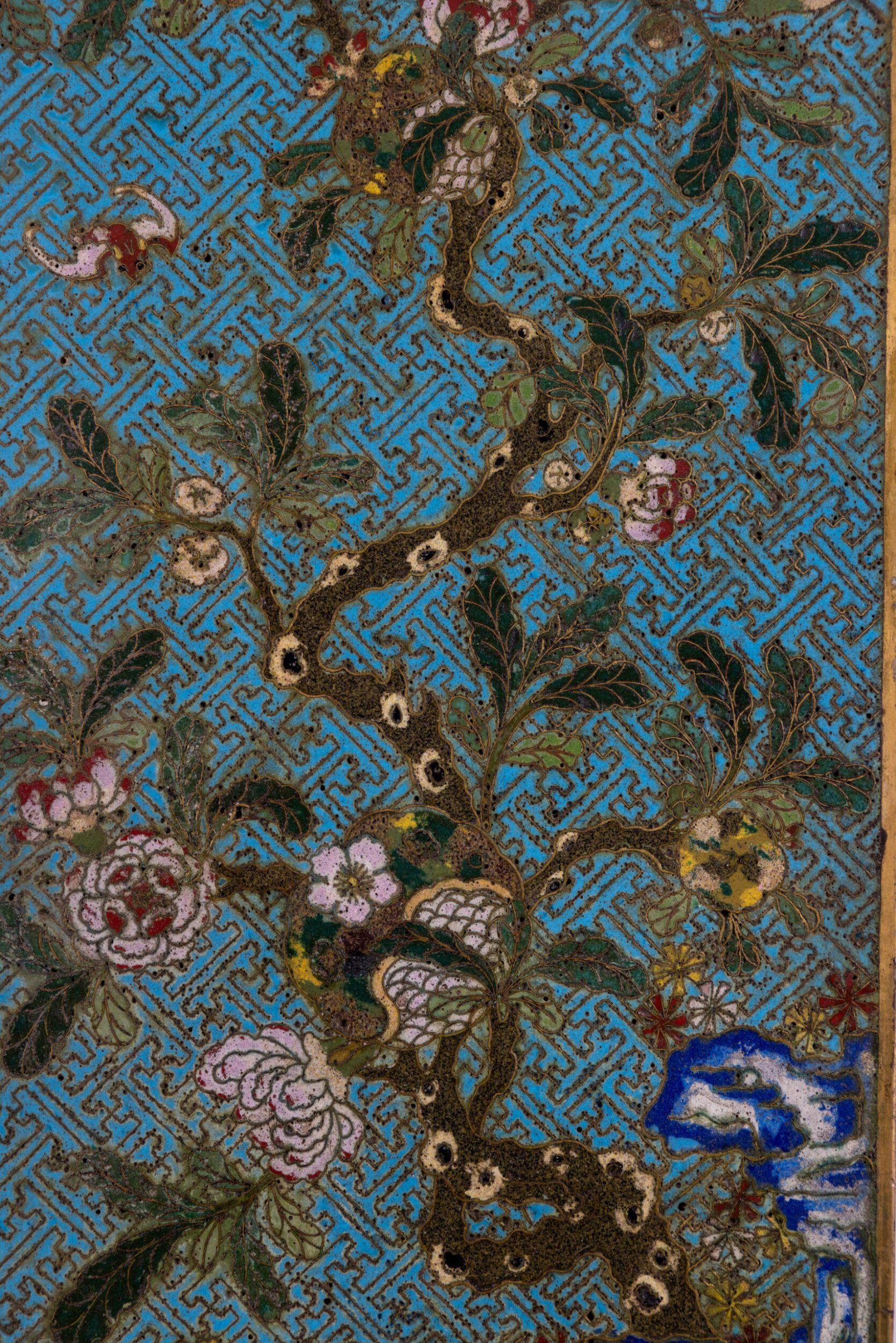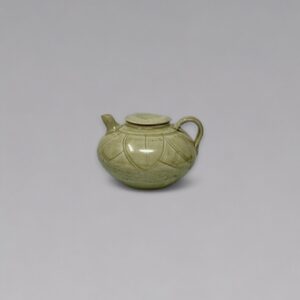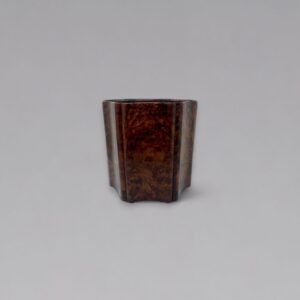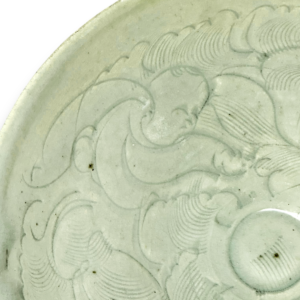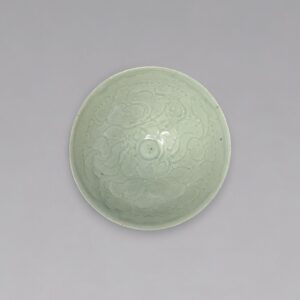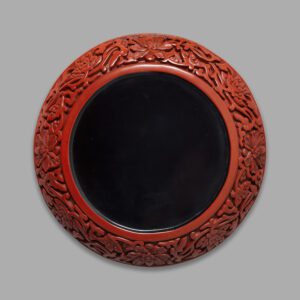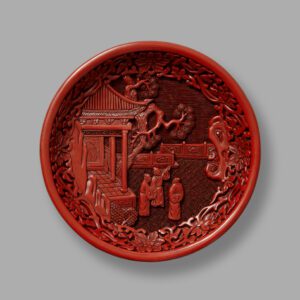The square-section body rises from a splayed foot to a gently tapering neck. Each side is vividly decorated with alternating scenes featuring clusters of grapes, peaches, finger citrons, and pomegranates, all growing from twisted branches amidst jagged rocks and birds in flight. The foot and neck are embellished with stylized lotus scrolls set against a turquoise ground, framed by key-fret borders.
An exceptionally large rectangular cloisonné enamel ‘cong’ vase (Qianlong period, 1736-1795)
Description
Dimensions: 63.4cm high, 21cm wide
Provenance:
Cathay Art Museum, Taipei (Taiwan)
A private Asian collection
Published:
Cathay Art Museum, ‘Selections of the Chinfon Bank Collection I’, June 2010
The square-section body rises from a splayed foot to a gently tapering neck. Each side is vividly decorated with alternating scenes featuring clusters of grapes, peaches, finger citrons, and pomegranates, all growing from twisted branches amidst jagged rocks and birds in flight. The foot and neck are embellished with stylized lotus scrolls set against a turquoise ground, framed by key-fret borders.
Compare with a slightly smaller cong-shaped vase in the Palace Museum, Beijing (fig. 1), illustrated in ‘Compendium of Collections in the Palace Museum. Enamels, Vol. 3 – Cloisonné in the Qing Dynasty (1644–1911)’, Beijing, 2011, p. 171, no. 136 (33.5 cm high).
This rare type of cong vase appears to be related to similarly shaped vases in porcelain, also from the Qianlong period, such as a famille-rose vase included in the exhibition ‘The Life of Emperor Qianlong’, The Macao Museum of Art, 2002, pp. 272-273, no. 87.
